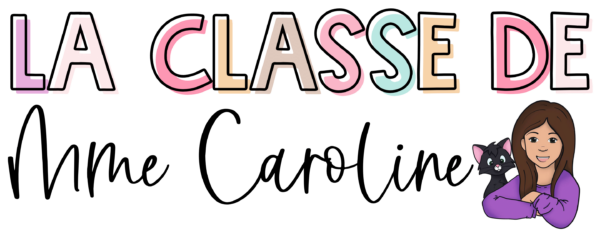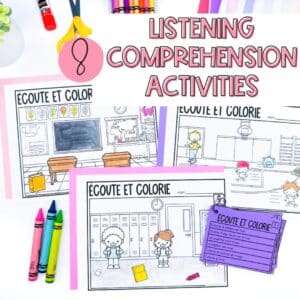
What is Phonemic Awareness and How do you Teach it?
If you’re like most primary teachers, you’ve heard the term phonological awareness tossed around more than a few times. (Need a refresher? Here’s a quick overview.) Phonological awareness includes a broad set of sound-related skills — like rhyming, syllable counting, and alliteration. Phonemic awareness, though, focuses specifically on individual phonemes — the smallest units of sound.
Today, we’re zooming in on one essential — and often misunderstood — piece of that puzzle: phonemic awareness. It’s the foundation for so many literacy skills, but it can also feel a little tricky to teach.
So, what is phonemic awareness? I’m going to walk you through exactly what it is, the skills involved (from easiest to most complex), and some go-to ideas and resources that have worked well in my classroom.
What is Phonemic Awareness?
Phonemic awareness begins by understanding the phoneme – the smallest unit of sound. Smaller than a syllable, phonemes are the basic sounds by which we build up words, sentences, and every form of spoken language.
French has around 36 to 37 phonemes, depending on the dialect. That’s 16 oral vowels, 3 nasal vowels, 17 consonants, and 3 semi-vowels. Think of sounds like /m/ or /ou/.
In French phonemic awareness, students study and memorize these phonemes, identifying their presence in words and manipulating them to construct new words. It’s a really helpful way to teach students to pronounce words they’ve never seen before.
French Phonemic Awareness Skills
French phonemic awareness starts simple – usually with isolation. That means identifying the individual sounds – just one at a time. Then, students can move on to harder tasks like grouping phonemes together, replacing them within words, or removing them entirely.
If you’re teaching phonemic awareness in French, this step-by-step guide will walk you through everything you need, from isolation to substitution.
Phoneme Isolation
This is where it all begins — getting students to listen closely to the sounds within a word. In isolation tasks, we identify phonemes a single phoneme, either at the beginning, in the middle, or at the end of a word. It’s as simple as asking:
- “Is the sound /m/ at the beginning, middle, or end of the word ami?” (middle)
- “Does the word lune have the sound /u/ in it? Yes or no?” (yes)
- “Which phoneme is missing from __apa?” (/p/)
Sorting words by their beginning, middle, or final sounds is another great activity for this skill. If you’re looking for hands-on practice, I’ve got phoneme isolation clip cards you can print and use right away!

Phoneme Blending
Once students can hear individual phonemes, the next step is blending them together to form words. You say each sound slowly — like /b/…/a/…/l/ — and they put it together to say balle. This helps them “hear” how words are built.
Try using:
- Blending strips (you can grab a letter sounds set here)
- Real words and nonsense words (like rup or lon)
- Tapping or sliding fingers across the table for each sound
It’s all about building that automatic recognition so they can go from “sound it out” to “got it!” in no time.
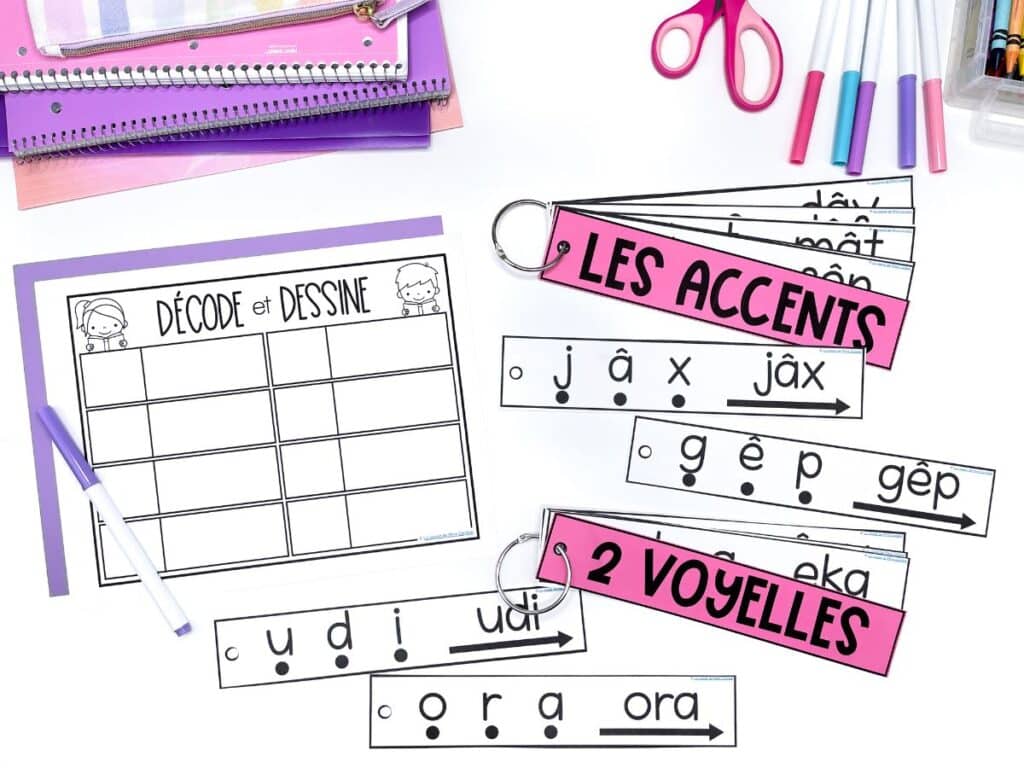
Phoneme Segmentation
Now, things start to get trickier. We’re not just hearing individual phonemes; we’re breaking a word down into its constituent sounds. Take the word chat. When we segment it into its individual phonemes, we get /?/ – /a/. That’s two distinct sounds — even though there are four letters!
I find it helps to count the phonemes in a word using your fingers. Students quickly realise that it’s not as simple as counting letters and that some combination of letters produces a particular sound, e.g., “ch” makes the sound /?/.
Another popular exercise is orthographic mapping. This is the process by which our brains link the sounds (phonemes) in a word to the letters (graphemes) that represent them. For this to happen, a student needs to:
- Segment the word into its individual phonemes (e.g. hearing that chat = /?/ /a/)
- Match each of those phonemes to a letter or letter combination
- Store that connection in memory so they can recognise and spell the word automatically later
So, when students practice phoneme segmentation, they’re training their brains to hear each sound clearly — which is exactly what they need to build strong sound-letter connections through orthographic mapping.
Together, these exercises help students identify all the sounds within a word. If you need some worksheets to get you started, I’ve got you covered – check out these resources!

Phoneme Addition
Once students are confident in hearing and blending sounds, it’s time to level up with phoneme addition — adding a new sound to an existing word to make a completely new one.
For example:
- Start with rond ? add the sound /f/ at the beginning ? it becomes front
The focus here is on sounds, not spelling. It’s okay if the spelling doesn’t match perfectly — what matters is that students are manipulating the phonemes accurately. This is a fantastic way to build word flexibility and oral language confidence.
Looking for classroom-ready resources? You’ll find some phoneme addition centres here that my students love using during our literacy block!
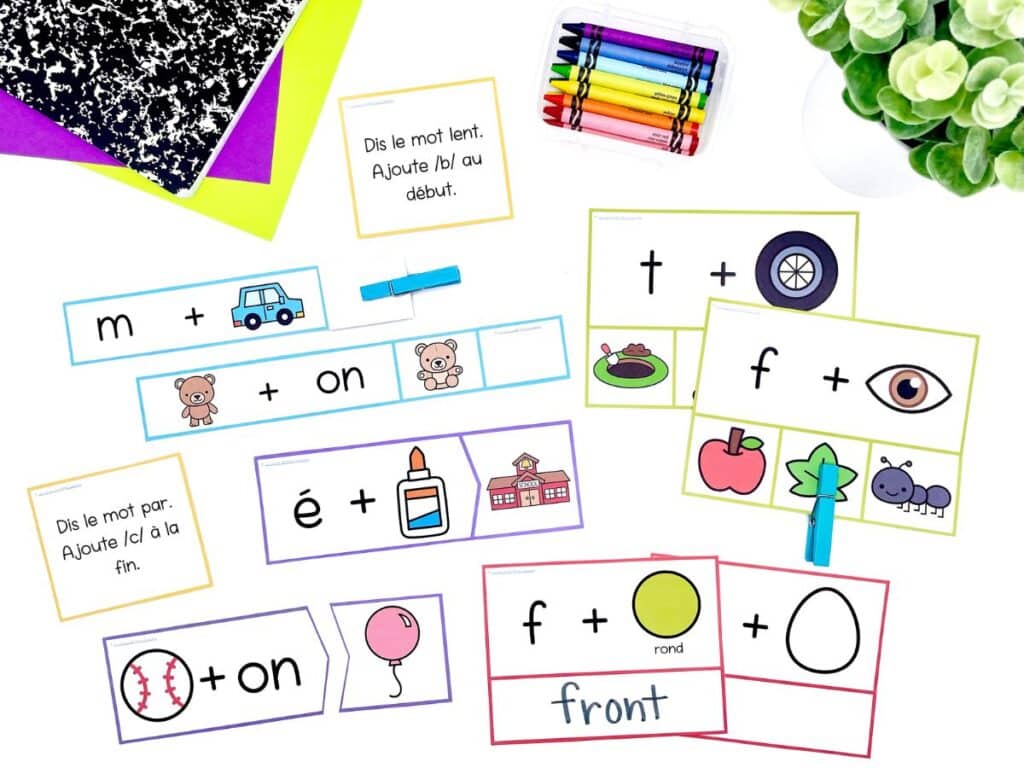
Phoneme Subtraction
Phoneme subtraction is definitely one of the harder skills for students to master. It requires removing a sound from a word to make an entirely new word. However, students must also understand how this changes the spelling and influences the word’s pronunciation overall.
For example:
- Start with ballon ? remove /on/ from the end ? it becomes balle
Just like with addition, it opens the doors for students to make many more words. Phoneme subtractions reinforce strong listening skills and a flexible understanding of how words work.
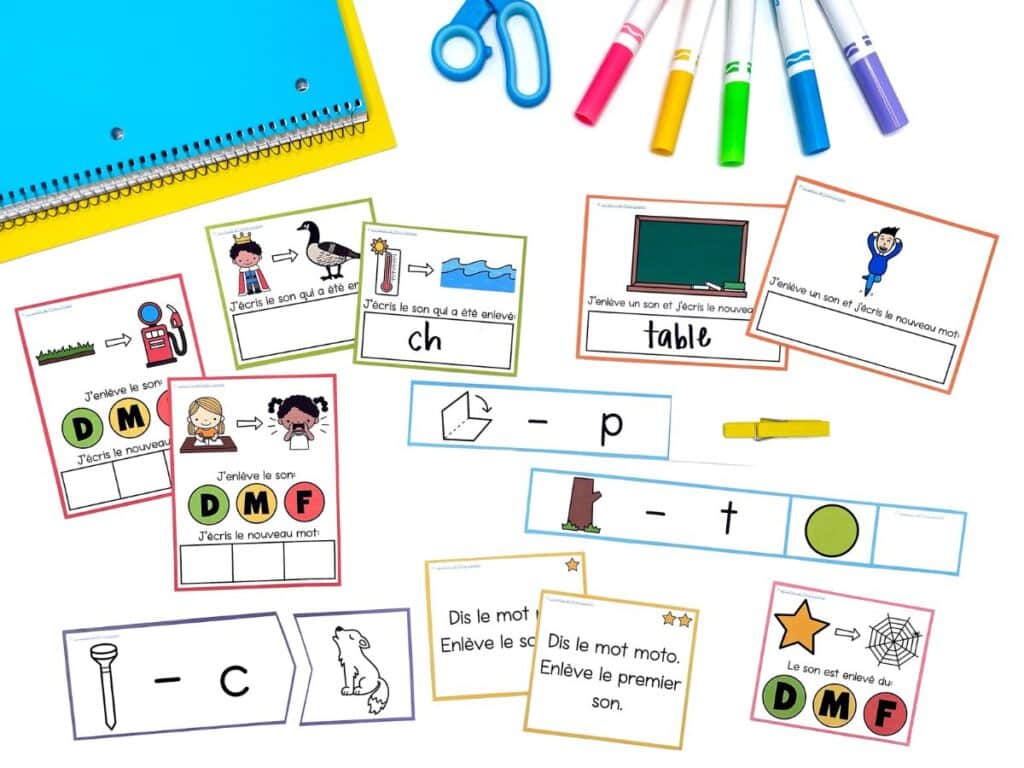
Phoneme Substitution
The last skill is by far the hardest, but also the most rewarding. We combine addition and subtraction to get substitution. In short, what happens if we remove one phoneme from a word and replace it with another? It’s the final skill in helping students decode unfamiliar words.
For example:
- Start with coule ? change the /k/ to /r/ ? now you have roule
From here, students can begin to read more independently. Rather than asking a teacher for help, when students come across a word they don’t know – like loupe – they can use their prior knowledge (say, of lampe) and realise, “Hey! That’s the same word, but with one sound changed.” If they can isolate and swap the /am/ for /ou/, they can decode loupe confidently.
It’s French phonemic awareness in action!
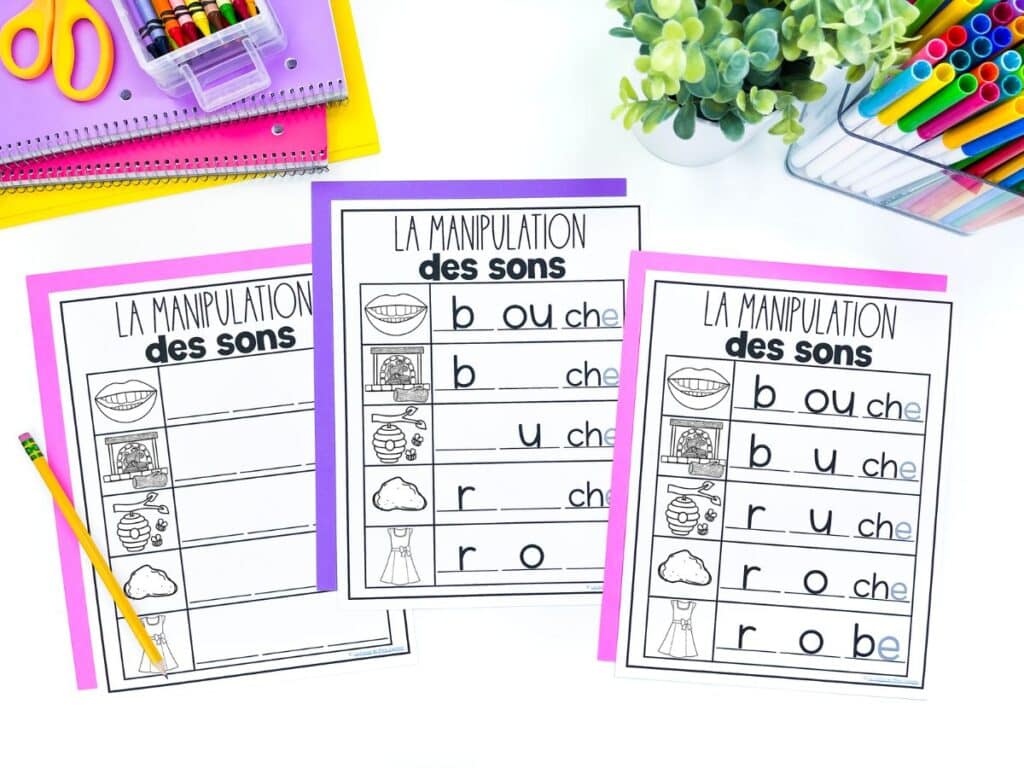
Want to check out the resources listed?
All the links above lead to TPT, but the resources are also available on our website. Here are the resources available here for purchase in CAD. Don’t forget you can also buy credits for an additional discount (up to $15 off).
-
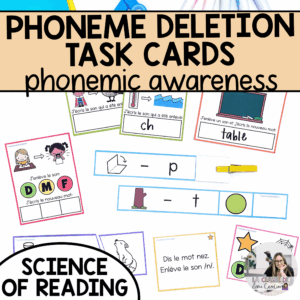 French Phoneme Deletion Task Cards Literacy Centres | Phonological Awareness$ 6.00
French Phoneme Deletion Task Cards Literacy Centres | Phonological Awareness$ 6.00 -
 French Decoding Strips for Compound Sounds: Volume 5$ 5.50
French Decoding Strips for Compound Sounds: Volume 5$ 5.50 -
 French Phoneme Addition Task Cards | Literacy Centres for Phonological Awareness$ 6.00
French Phoneme Addition Task Cards | Literacy Centres for Phonological Awareness$ 6.00 -
 French Decoding Strips to Practice French Reading – Vowel Sounds and Accents$ 6.00
French Decoding Strips to Practice French Reading – Vowel Sounds and Accents$ 6.00 -
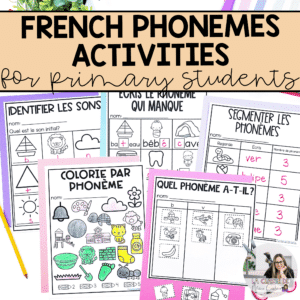 French Phonemes Activities and Assessment | French Phonological Awareness$ 6.50
French Phonemes Activities and Assessment | French Phonological Awareness$ 6.50 -
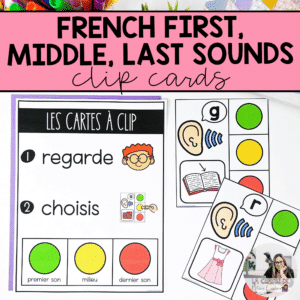 French First, Middle, Last Sound Clip Cards | French Phonological Awareness$ 4.00
French First, Middle, Last Sound Clip Cards | French Phonological Awareness$ 4.00 -
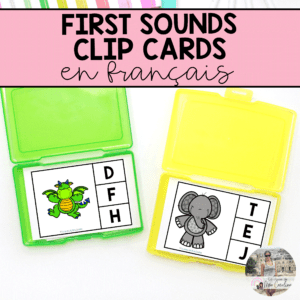 French First Sounds Clip Cards$ 3.50
French First Sounds Clip Cards$ 3.50
- Read more about: Blog Feed, French, Primary, Science of Reading
You might also like...
find what you need
Browse by Category
Looking to do some phonics based shared reading?

